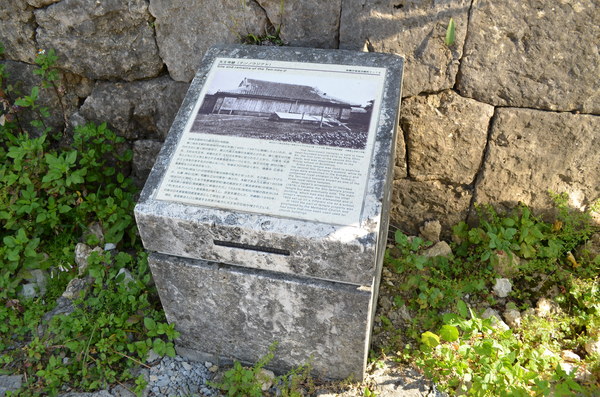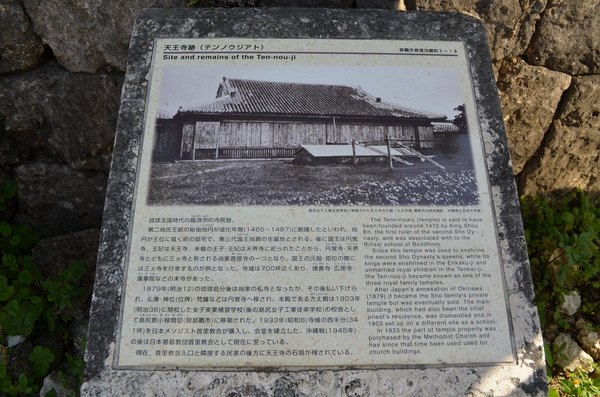Site and remains of the Ten-nou-ji
HistoryTemples and shrines



Here are the ruins of the Rinzai school of Buddhism’s temple of the Ryukyu Kingdom era.
Basic information
- Address
- 903-0812 2-18 Tonokura-cho Shuri Naha Okinawa Next to the entrance of the Shuri branch of the United Church of Christ in Japan.
- Business hours
- Nothing in particular
- Close day
- Nothing in particular
- Charge
- Free
- Parking
- None
- Access information
- A 5-minute walk from the monorail Shuri station. Next to the entrance of the Shuri branch of the United Church of Christ in Japan.
Additional Information
- Academic information
- Here are the ruins of the Rinzai school of Buddhism’s temple of the Ryukyu Kingdom era.
The Ten-nou-ji (temple), is thought to have been established during the Seika period (1645-1487) by King Shoen, the founder of the second Sho-shi royal descendants. This place was a mansion of King Shoen; he lived in the mansion when he was a prince; also it is thought to have been the birthplace of the third king Shoshin. Since this temple was used to enshrine the second Sho royal descendants’s queens, while its kings were enshrined in the Enkaku-ji and unmarried royal children in the Tenkai-ji, the Ten-nou-ji became known as one of the three royal family temples. And the king visiting these three temples at the coming of age ceremony or enthronement became an institution. The temple grounds are 2,300 square meters, and they contain the branch temples, Kenzen-ji, Koutoku-ji, and Renge-in.
After Japan’s annexation of Okinawa (1879), it became the Sho family’s private temple, but it was eventually sold. The statue of Buddha, mortuary tablets and, temple bell were moved to Enkaku-ji. The main building, Houjou-den moved to Oroku-magiri, Shimajiri county (present: Naha city) and became the Girls Technical Continuation School's building (Later Shimajiri- Girls Industrial Apprentice School) which was established in 1903. (the 36th year of Meiji era). In 1933, the west part (1,100 square meters) of the temple property was purchased by the Methodist Church and a church was built. After the Battle of Okinawa, the building has been used as the Shuri branch of the United Church of Christ in Japan. Now, the stone wall of Ten-nou-ji remains at the back of a house nearby the Shuri church. - Quote
- Naha City Museum of History
